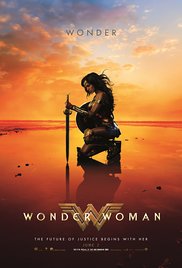
Robert McKee’s WORKS / DOESN’T WORK Film Review:
Wonder Woman (2017) | Directed by Patty Jenkins
McKee Says: It Works, But… (Spoiler Alert!)
Over all, WONDER WOMAN successfully combines a coherent script and amiable casting with eye-catching spectacle and the triumph of good over evil. What’s more, the revival of this iconic protagonist in these contentious days makes it an important social event. Delighted little girls in my audience shouted “Wow!” scene after scene. It’s a hit and doing what Action spectacles are designed to do: making money.
However, I can think of two ways in which the film doesn’t work and cost it a bigger box office.
1. Repetitious Action:
I counted ten action set pieces: one rescue, one escape, and no less than eight assaults by Wonder Woman. Action becomes boredom without variety, so the director is to be congratulated for inducing pace, variation, and a sense of progression into a screenplay that repeated Wonder Woman’s mania for confrontation end to end.
2. The Character of Ares:
First, casting a British actor as villain is a dreadful cliché. Anthony Hopkins’ Hannibal the Cannibal and Alan Rickman’s Hans Gruber set the standard decades ago, but persistent copyists have worn the meme to its nub.
Second, an Action story can only be as exciting as the villain and his tactics make it. A cliché in that role sucks energy out of the telling.
The Action genre can deliver a positive climax in just one of three ways: The hero overpowers the villain; the hero outsmarts the villain; or the hero does both—outsmarts and overpowers.
Outsmarting means discovering a hidden flaw in the villain and, in a jiu-jitsu like move, exploiting it. Needless to say, a climax that pivots on the hero outsmarting the villain is far more satisfying than her overpowering him with brute muscle. But then an amazing feat of outsmarting calls for a screenplay with mental muscle.
Ares has no hidden flaw to discover, outsmart, and exploit; he’s just weaker than Wonder Woman and so ripe for defeat. We’re told that he was once the most murderous god on Olympus. If so, that doesn’t say much for the power of Zeus and his fellow deities. I doubt that Satan, the Christian god of evil, would crumple like Ares.
The Moral Question:
The Action Hero is, by definition, a good person who uses evil means to defeat evil. The hero will be as lying and deceitful as evil, as clever as evil, and most importantly, as violent as evil. In fact, the hero will ultimately do these things far better than evil, destroy evil, and then go back to being a good person again.
Of course, the notion that people who use evil means to do good will not be corrupted by these tactics, or that once heroes take life-and-death power into their hands, they will it back to the people is naïve. But then Action has always pitted an idealized purity of good against undiluted evil. That’s the core of this genre.
Because action heroes must be violent, they have been almost exclusively male since Homer. Recently, however, long form television series such as HOMELAND, GAME OF THRONES, VIKINGS, and THE AMERICANS have added fiercely heroic killer women to the ranks. Now WONDER WOMAN.
Always bear in mind that Action writers never intend for fictional violence to be taken as a literal model for behavior. Rather, they use it as a metaphor for the courageous strength we all need to face life. For that reason, society has generally accepted the role of Action tales in the lives of boys. On the other hand, if our sorry society is to progress, we must empower women as an equal, hopefully greater, force for moral good.
Therefore, some questions: Are we comfortable using violence as a poetic for girls in the same way we have always used it for boys? Have Action stories made boys better human beings? Will they have a positive influence on girls? I hope so because the trend is clear.